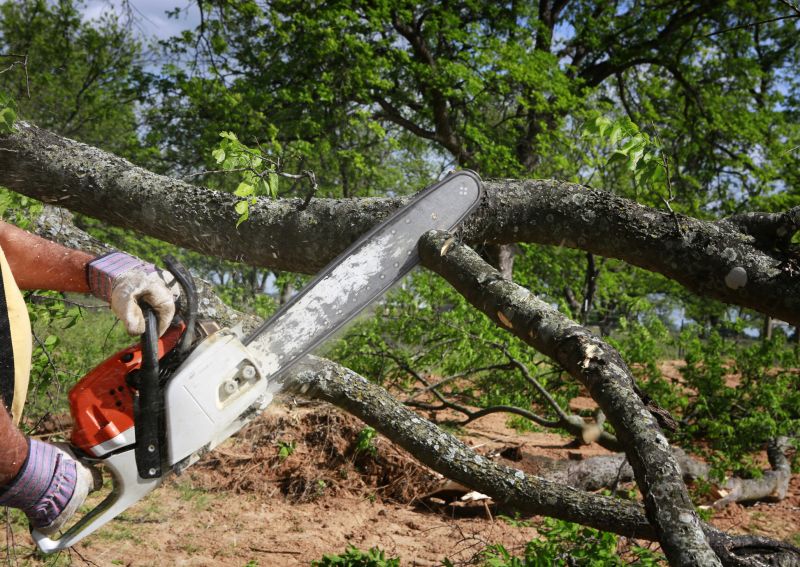Popular Tree Removal Tools for Safe and Effective Tree Care
Explore essential equipment that ensures safe, precise, and hassle-free tree removal for various yard sizes and tree types.
 Tree removal is a task that often requires specialized equipment to ensure safety and efficiency. In Cypress, TX, where mature trees are common, having the right tools can make a significant difference in managing landscape maintenance or hazardous situations. From manual hand tools to powered equipment, there are various options suited to different scales of work and user experience levels.
Tree removal is a task that often requires specialized equipment to ensure safety and efficiency. In Cypress, TX, where mature trees are common, having the right tools can make a significant difference in managing landscape maintenance or hazardous situations. From manual hand tools to powered equipment, there are various options suited to different scales of work and user experience levels.
Top Overall Option
Electric Chainsaw
An electric chainsaw offers a balance of power and ease of use, making it suitable for a wide range of tree removal tasks. It is generally lighter and quieter than gas-powered models, which can be advantageous for extended use or residential environments. With adjustable speed settings and safety features, an electric chainsaw can be a versatile tool for trimming branches or felling smaller trees. Proper maintenance and safety precautions are essential to ensure optimal performance and safety during operation.
Types of Products For Tree Removals
Chainsaws
Powerful handheld tools ideal for cutting through trunks and branches of various sizes.
Pole Saws
Extendable saws designed to reach high branches without the need for ladders.
Pruning Saws
Manual saws suited for trimming smaller branches and detailed work.
Loppers
Long-handled cutting tools for pruning and removing medium-sized branches.
Hand Pruners
Compact tools for fine trimming and detailed branch work.
Stump Grinders
Heavy-duty machines used to grind down remaining tree stumps after removal.
Hydraulic Tree Spades
Equipment used to lift and transplant large trees or remove root balls.
Rope and Pulley Systems
Manual tools to assist in controlling the fall of large branches or trees.
Safety Gear
Protective equipment including helmets, gloves, and eye protection essential for safe operation.
Aerial Lifts
Equipment to elevate workers safely to high branches for trimming or removal.
Log Splitters
Tools used to split wood from felled trees into manageable pieces.
Tree Removal Kits
Complete sets that include multiple tools for comprehensive tree removal projects.
Popular Choices
Battery-powered chainsaws offering portability and convenience for various removal tasks.
Lightweight tools for trimming high branches without ladders.
Affordable and easy-to-use options for small trimming jobs.
Traditional power tools suitable for heavy-duty tree felling and large branch cutting.
Versatile tools for reaching and trimming high branches with minimal effort.
Tools designed to attach to existing equipment for efficient stump grinding.
Essential safety gear to protect from falling debris and branch snaps.
Harnesses and spikes for professional tree removal or trimming at height.
Tools to assist in lifting and maneuvering large tree parts safely.
Machines for chipping branches and small trunks into mulch or disposal material.
Heavy-duty ropes for controlled lowering of large branches or sections.
Tools to guide the direction of falling trees safely.
Compact tools for detailed pruning of smaller branches.
Specialized equipment designed for extracting roots after stump grinding.
Accessories to improve ladder safety during high branch work.
High-tech devices to assess tree health and structure before removal.
Equipment used to stabilize and support trees during removal or pruning.
Manual tools such as pruning saws and loppers are essential for smaller branches and delicate trimming tasks. For larger limbs or full tree removals, chainsaws and pole saws provide the necessary power and reach to handle tough jobs effectively. Safety gear, including helmets, gloves, and eye protection, is equally important to prevent injuries during operation.
Heavy-duty equipment like stump grinders and hydraulic tree spades are used for more complex removal projects, especially when dealing with large trunks or root systems. These tools often require some training to operate safely but can significantly speed up the process and improve results. When selecting equipment, considering the size of the trees, accessibility of the site, and your own experience level can help determine the most appropriate tools.
Proper planning and the right product selection are crucial for successful tree removal projects. Whether you are a homeowner managing a fallen branch or a professional arborist handling large-scale removals, understanding the variety of available tools ensures you choose the best options for your needs. Always prioritize safety and proper technique to avoid accidents and ensure the health of surrounding vegetation.
Key Buying Considerations
- Assess the size and type of trees to determine the appropriate equipment size and power.
- Consider the height and reach needed, especially for high branches or tall trees.
- Evaluate your experience level with power tools and tree removal procedures.
- Safety features such as automatic brakes, safety switches, and protective guards are essential.
- Power source options include electric, battery-powered, and gas engines, each with advantages and limitations.
- Portability and weight of tools can impact ease of use and maneuverability.
- Durability and build quality influence long-term performance and safety.
- Compatibility of attachments and accessories can expand the versatility of your tools.
- Storage and maintenance requirements should align with your available space and capabilities.
- Budget constraints may influence the choice of manual versus powered equipment.
- Availability of spare parts and customer support can affect ongoing maintenance.
- Noise levels may be a consideration for residential areas or noise-sensitive environments.
- Environmental conditions such as weather and terrain can impact equipment selection.
- Training or experience with specific tools can improve safety and effectiveness.
- Compliance with local safety regulations and standards is important for legal and safety reasons.
